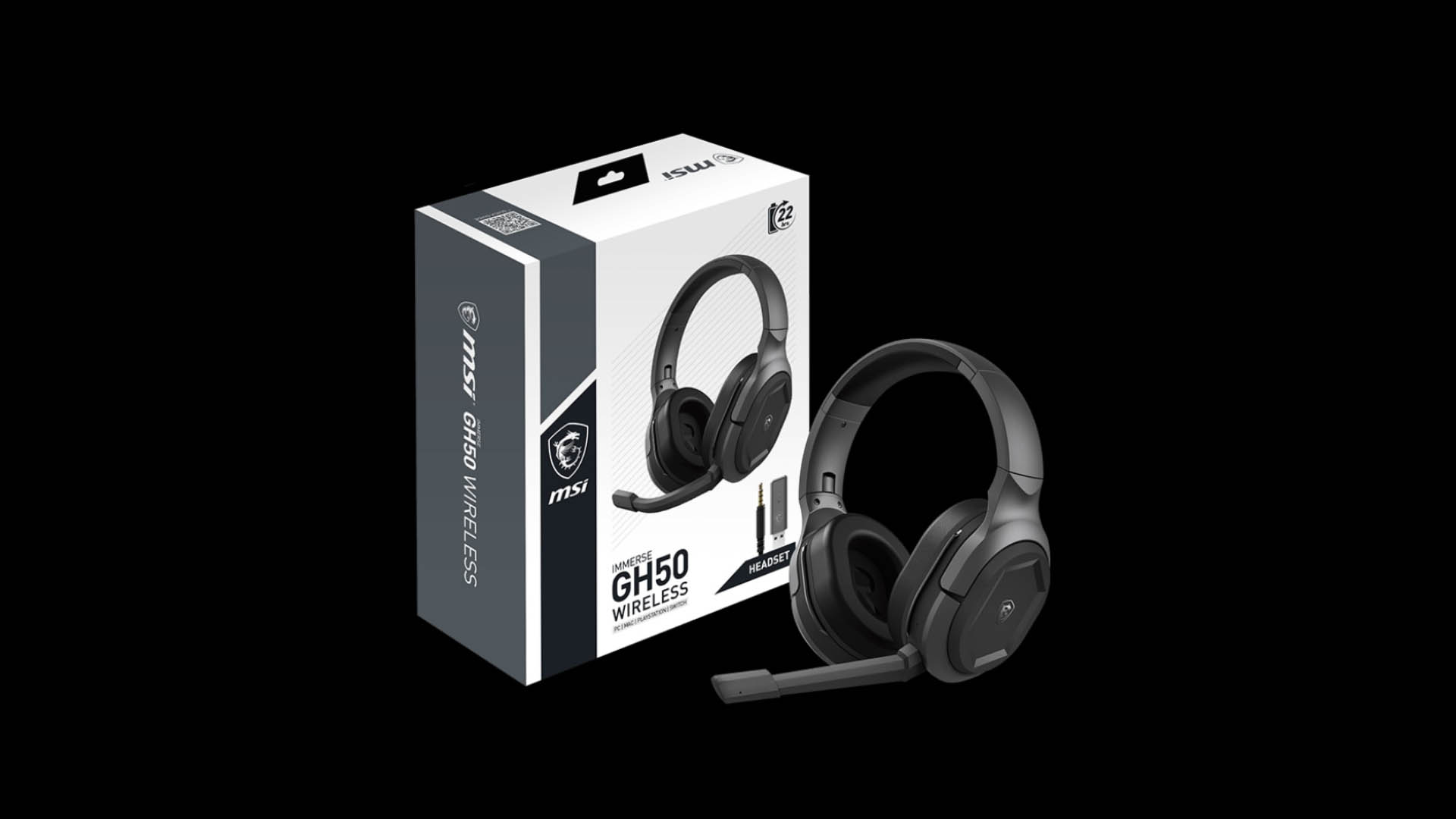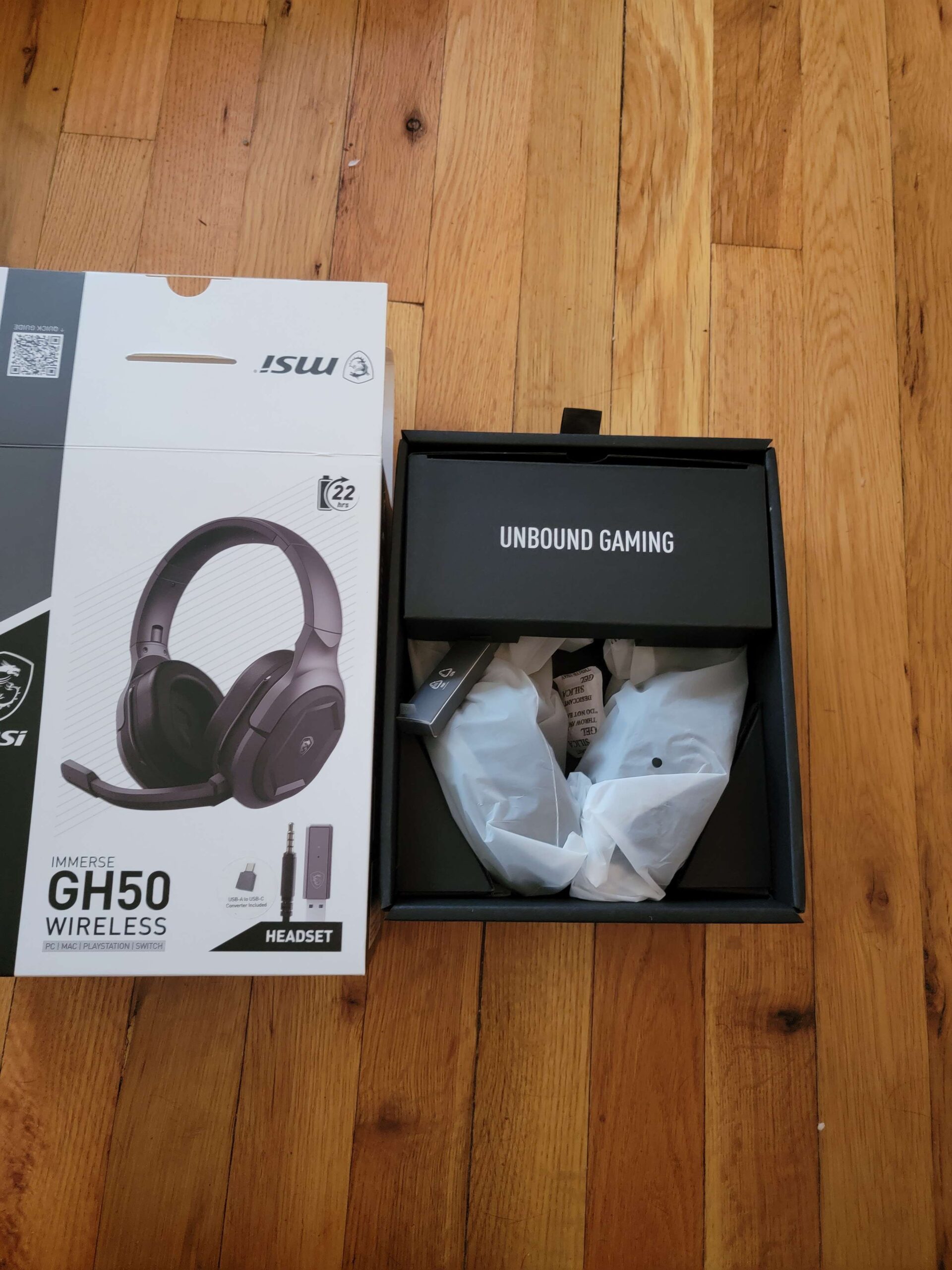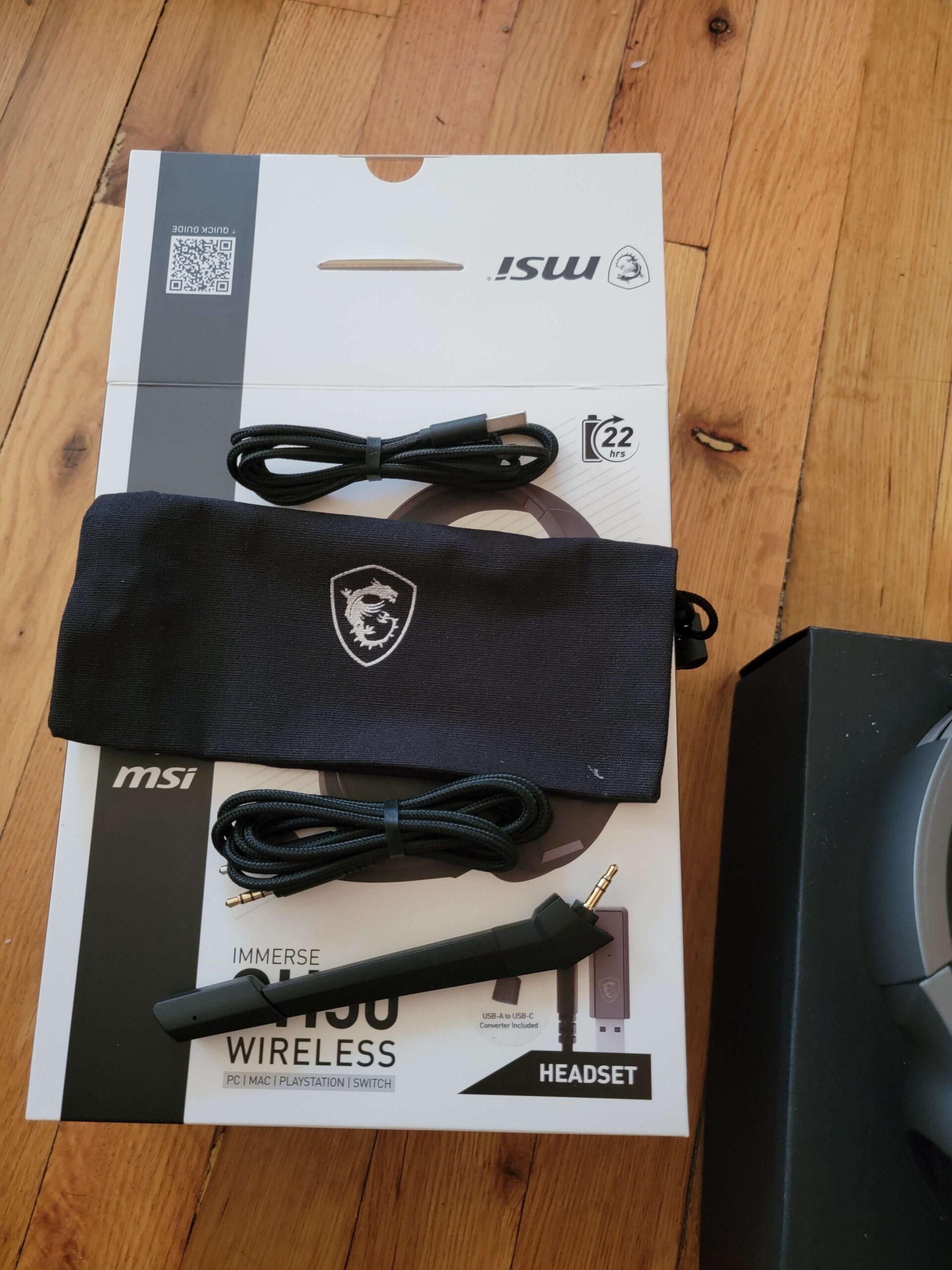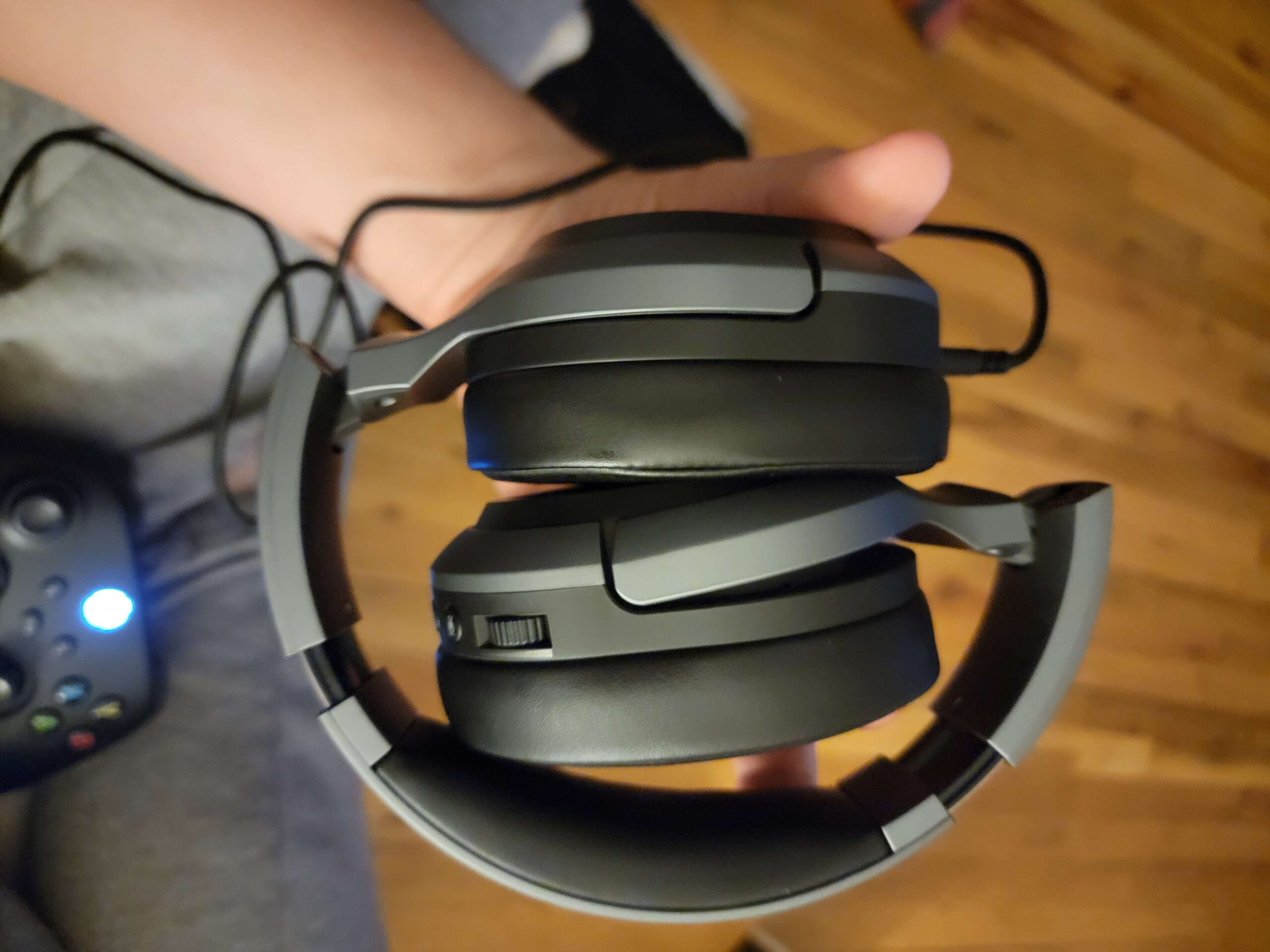
When it comes to gaming peripherals, the equipment you choose to use can impact your gameplay. Having the right equipment can make or break a gameplay session. Having a mouse that responds in a timely manner can help you move out of the way quickly. Having a keyboard that responds to your inputs can help with lines of commands such as using combination attacks. The right headphones can allow you to hear enemies approaching from an area you can’t see. When it comes to gaming headphones, there are a bunch of factors that can make or break the gaming experience. We look at these factors when reviewing the MSI Immerse GH50 Wireless Headphones.
Past Headsets
Over the past year, I have been using the Astro A40s, Epos H3Pro Hybrid Headset, and Naruto Collection Itachi HyperX Cloud II headphones when gaming. In the past I have used a variety of headsets; specifically, I have used: Turtle Beaches, Trittons, Plantronics Rigs, Astro A40s, Skull Candies, and Hyper X headsets. Before reviewing Epos H3Pro Hybrid Headset, I would rotate between the A40s, HyperX Cloud II, and the Plantronics Rig 600. Each headset came with its own positive and negative aspects.
With the A40s, the customization, individual parts, and sound quality were excellent; the main problems with the A40s were the mic’s sensitivity/sound quality, the ability to adjust the volume without a mixer, and how easy the 3.5MM cable would break or create static in the headset. For the most part, we have been able to get past most of these negative aspects with some time and effort. In fact, the A40s have survived since PAX 2020.
On the other hand, the Rig 600 and Hyper X had problems that weren’t easy to fix or manage. With the Rig 600, the microphone broke and we were unable to fix it. This caused a bunch of static when using the mic; the Bluetooth was great but ultimately the microphone was more important. Then there is the HyperX Cloud II wired; the biggest problem with the HyperX headset was that after being dropped a few times, the cord would create a lot of static and the 3.5MM jack wouldn’t always register.
The Epos H3Pro Hybrid headset can be good for gaming if you don’t mind cords but the wireless feature can be helpful. The Epos H3Pro Hybrid headset is comfortable for those with a small/average head but not great for those with glasses, long earrings, big ears, or big heads. For a battery-powered headset, this headset has a great battery life but requiring a battery even when connected to a controller is unreasonable.
With these experiences in mind, we look at the MSI Immerse GH50 Wireless Headphones and see how they compare to previous headphones that I have used before.

MSI Immerse GH50 Wireless Headphones
Unboxing and PC Setup
When we first unboxed the MSI Immerse GH50 Wireless Headphones, the box gave off a sleek but compact design. The microphone plugin, USB C Charger, USB Wireless adaptor, USB A to USB C Converter, MSI Headphone case, and 3.5mm cable are tucked carefully into a box saying Unbound Gaming.
Installation of the headset on the PC was fairly simple with users having to plug in the USB adapter and synchronizing the headset. With the headset synched with the adapter, we attempted to use the Nahimic audio software.
Despite installing the preloaded program, the headset was not recognized by the software. Additionally, the microphone was not recognized by Steam voice chat or Discord voice chat at first. After checking to see if the drivers were up-to-date, which they were, I attempted to troubleshoot through other manners.
After troubleshooting, I discovered that if an external capture card was plugged into the computer, the computer would prioritize the capture card over the wireless adapter. Once we unplugged the capture card, the headset was able to be recognized and work appropriately. After trying the headset on the computer, I decided to try the headset out on the Xbox Series X, Nintendo Switch, and PlayStation 5.

Consoles & Mobile Devices
After the PC setup was a failure, I decided to move on to trying out the MSI Immerse GH50 Wireless Headphones on the Xbox Series X, PlayStation 5, and Nintendo Switch. When trying out the headset on any of the consoles, I switched between the USB Adapter and the 3.5mm cable. Up first was the Xbox Series X. On the Xbox, the USB adapter was not recognized so I switched to the 3.5mm cable.
With the headset plugged in directly to the controller, I was able to talk with friends in party chat and get a great range of dynamic audio from each game. The sound quality of the headphones with Xbox games was stellar with a wide array of sounds and tones with distinct qualities.
After trying out the headphones on the Xbox Series X, I moved over to the Nintendo Switch and PlayStation 5. First, I tried out the 3.5 MM cable on both devices and the headset was able to connect. After testing the 3.5 MM cable, the Wireless adapter was up next.
Plugging the USB adapter into the PlayStation 5 and the Nintendo Switch dock, the headphones were still able to connect. The sound quality on PS5 was delayed a bit at first but after a few seconds synchronized properly.
After trying out the headset on the PS5 and Switch dock, I wanted to see if it could connect to the handheld Switch or my phone. Since the device uses only a wireless adaptor and not a Bluetooth signal, we had to connect the USB C adapter to the wireless adapter in order to plug it into the Switch and S21 Ultra. With it plugged into the USB slot, the headset was able to connect but the connected adapter was inconvenient and awkward to hold.

MSI Immerse GH50 Quality
The overall quality of the MSI Immerse GH50 Wireless Headset from unboxing to use was fairly simple to set up and go. Using the 3.5mm cable felt easier to use rather than moving around the wireless adapter from one device to the next. Using the 3.5mm cable was more convenient but does come with a downside; while connected to the controller, the mute button on the headset does not work.
This seems like a massive design flaw not being able to mute while connected through the cable. The microphone is detachable but when connected it has very little give or maneuverability; without being able to mute and difficulty moving it, it is easier to disconnect the cable or microphone to stop unintentional sounds. Additionally, you cannot adjust the sound levels while plugged in.
The overall sound quality is excellent but the inability to adjust the sound levels while wired feels like an oversight. The headset is adjustable with the earphones having the ability to collapse inward and be more compact; additionally, users can adjust the earpiece location by sliding down each side in order to fit their head.
Each earpiece has a slight swivel to help with getting on the headset and improve comfort while wearing. Sadly, those with piercings or glasses might not feel the most comfortable while wearing the MSI Immerse G50 Headset for long sessions. Even without wearing glasses, the G50’s become uncomfortable after 5 hours of consecutive use.
The battery within the headphones easily lasted for over 24 hours when kept at moderate sound levels but when turned out died faster. Another design is that there is no easy way to tell the battery life of the headphones. The headset will go until it dies. Thankfully, while in the mics quality sounds great.
Quality Test
In order to test the MSI Immerse GH50 Wireless Headset quality, we used the Hijacker Ultimate Headphone Test video. From the test, we were able to discern that the Headphones range from 20 to 200 hertz bs. For Treble, its range works from 8000 to 15000 then cuts out but then comes back and works from 16000 to 19000 Hz. The multichannel works properly between the left and right earpieces.
The headphones are able to respond well to the sound switching between the left and right ear. When wired the bass boost was not responsive. Checking out the Dolby Atmos video for how spatial sound works, we can see it working with multi-dimensional space for sound.

Verdict
At the end of the day, the MSI Immerse GH50 Wireless Headset gives users an amazing sound quality experience but has some major design flaws. The inability to mute the mic while wired and the position of the mic can lead to some uncomfortable situations. The mic does sound crisp and clear but the software integrated on the PC does not work properly.
In regards to discomfort, the headset can become uncomfortable to users with a big head after extended use; meanwhile, users who wear glasses or have ear piercings will become uncomfortable at a quicker rate. The ease of the setup and use make it fairly simple to use right out of the box. The headset has a sleek design with the ability to collapse for easy transportation.
If you want an immersive sound experience then the the MSI Immerse GH50 Wireless Headset does an excellent job if you have a smaller head. The battery life beats many other wireless headsets in the market but the lack of Bluetooth capability holds it back. If you are looking for a headset for competitive gaming, it can give you a leg up with its sound quality. If you are looking to experience a cutscene or video with dynamic audio, it can be submersive.
At $89.99, they are worth picking up for their sound quality and crisp mic but those with any previously mentioned issues should avoid them or have to deal with the side effects.
A copy of the MSI Immerse GH50 Wireless Headset was provided to Niche Gamer for review purposes. You can find additional information about Niche Gamer’s review/ethics policy here.